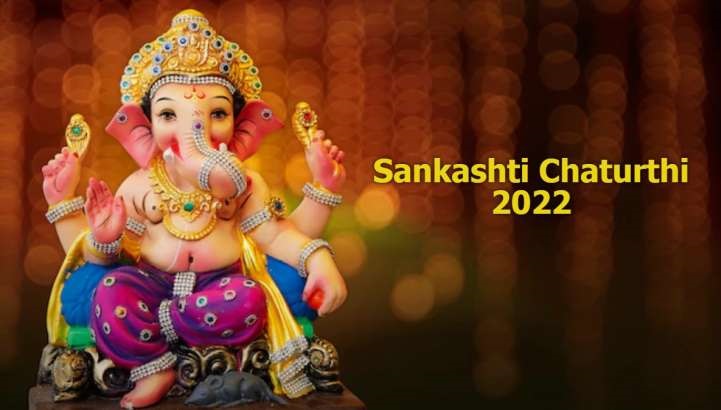After two years of limited celebration, preparations for a ten-day auspicious Ganesha festival are in full swing. This festival is celebrated with great pomp and show by people all over India. However, it is mainly celebrated in Maharashtra, Telangana, Andhra Pradesh, Maharashtra, etc.
People welcome Ganpati Bappa by installing idols of Lord Ganesha in their homes on the first day of the festival. Devotees decorate and worship the elephant-headed god and then say goodbye to him by immersing the idols in water after three, five or ten days. The duration of keeping the idols of Lord Ganesha at home for worship is entirely up to the devotees. There are many stories and beliefs behind the celebration of this holiday. Learn about some of them and the auspicious timing of Ganesh Sthapna and Visarjan here.

Birth Of Lord Ganesha
It is believed that Lord Ganesha was born in Chaturthi Tithi Shukla Paksha in the month of Bhadrapada, which falls on August 31 of this year in the Gregorian calendar.
In the famous story of the birth of Lord Ganesha, which is mentioned in some historical writings, it is said that Goddess Parvati created Lord Ganesha from sandalwood paste, which she used for bathing. She asked him to guard the entrance until she came back from her bath. Fulfilling his duty, Lord Shiva came and tried to meet his wife. When Lord Ganesha refused him to meet Goddess Parvati, Lord Shiva became enraged and separated Lord Ganesha’s head from his body. Seeing this, Goddess Parvati was furious and asked to destroy everything if she did not return her son. Seeing the worsening situation, Lord Shiva asked to bring the head of a baby animal whose mother was looking the other way from her child.
Fulfilling this condition, an elephant’s head was chosen for this task, after which Lord Shiva attached the elephant’s head to the body of Lord Ganesha. Since then, this day has been celebrated as Ganesh Chaturthi.
Ganesha Festival As A Symbol Of Patriotism
The grand celebration of the festival dates back to the time of Chhatrapati Shivaji Maharaj. However, the festival was revived by Bal Gangadhar Tilak to bring people together and bridge the gap between castes. He erected the first and oldest mandal, the Kesha Keshavi Naik Chal Sarvajanik Ganeshotsav Mandal at Girgaum in 1893. To instill a spirit of nationalism, he also started the tradition of setting up an idol of Lord Ganesha during the festival. People believe that he was the first to set up a large clay idol of Lord Ganesh in a public place and started the 10-day business.

Muhurat And Timings
The festival will start at Ganesh Chaturthi, which this time falls on August 31st. However, the tithi of Ganesh Chaturthi falls between August 30th and 31st. Tithi time will start at 15:33 on August 30th and will last until 15:22 the next day. Anant Chaturdashi, which falls on September 9, will mark the end of the festival when the devotees submerge the idol of Ganesha in water.
Shubh Muhurat for Murti Sthapana and and Pooja on August 31
Shubh Yog – 31st August, 2022 – 05:58 AM To 09:00 AM
Shubh Choghadiya – 31st August, 2022 – 10:45 AM – 12:15 PM
Evening Auspicious Time – 31st August, 2022 – 03:30 PM – 06:30 PM
According to the Hindu calendar, one should avoid moon sighting on 30 August from 3:33 pm to 8:40 pm and between 9:29 am to 9:10 pm on 31 August.
Also, Get Some More Information About –
- Find Out Experience and Expertise Creative Advertising Agency Delhi
- Performance Marketing Agency Delhi Trends For 2024
- List of Top Advertising Agencies in India
- Ritz Media World A Top Branding Agency for Startups
- Hire the Top Branding Agency in Delhi NCR for Ultimate Success
- Elements of Best Ad Marketing Agency in Delhi NCR
- Pioneers of Newspaper Print Advertising Agency
- Discover the Best ad agency in Delhi NCR
- Best Celebrity Endorsements Agency in Greater Noida
- Top Creative Ads Agency in Your Location – Ritz Media World
- Delhi Government Launches Mega Clean Air Campaign Amid Rising Pollution Concerns
- Top 300 Real Estate Blogspot Blog Commenting Sites List
- Vishwakarma jan 2024: Vishwakarma jan is celebrated today. Find out the date and puja guidelines
- iQOO Neo 9 Pro launched in India with Snapdragon 8+ Generation 2 SoC: Prices, specifications, launch offers, and everything else you need to know
- Avatar: the Last Airbender Review – A sparkling return for one fantasy series that is among the best of all time




